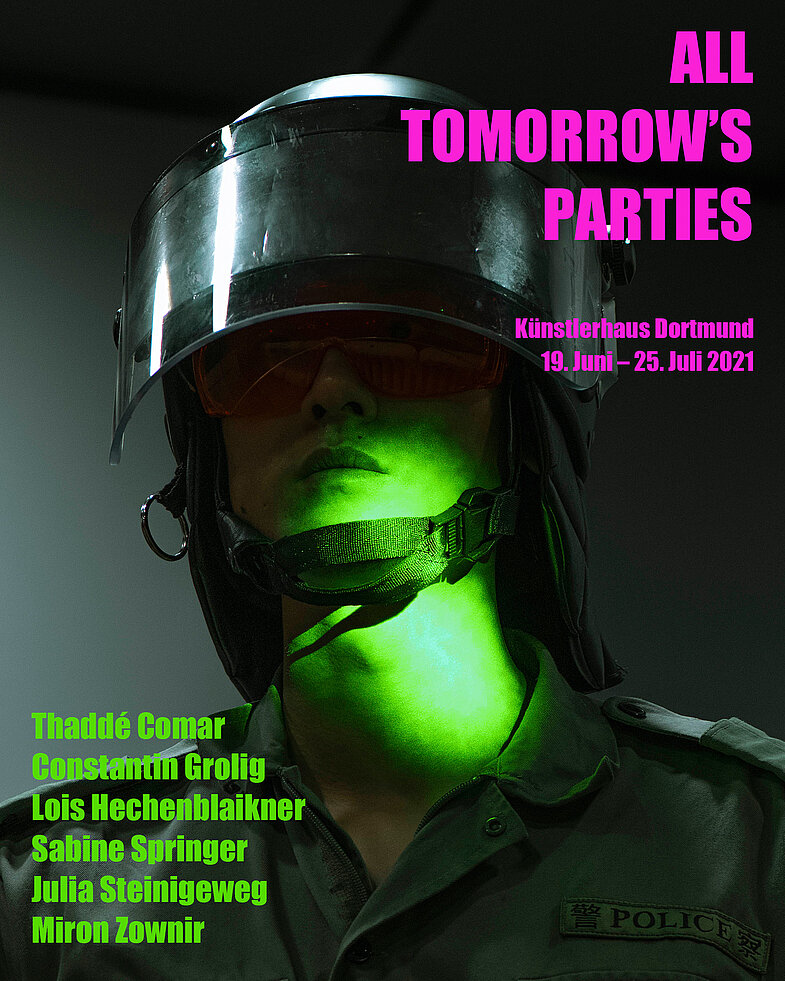
Our life is currently being questioned in almost every area. Traveling, flying - we may have to change our lives. But how do we redefine ourselves, how do we find a new identity? First it was changing locations and now even interpersonal contacts have mutated from essential to dangerous. We no longer experience ourselves as nomadic and interacting, but rather as solitary. We are separated from places of longing, also from people we long for. An imagined after is the time onto which we project our longings. Whereby the wish for the future is often enough that it should be the same as it was in the past.
The exhibition tries to present these aspects of yesterday, which should fill and enrich our future, and to question their suitability. Forms of physical closeness, joint ventures and dissolute living, as well as political commitment for a better future: the new old proximity is being put to the test.
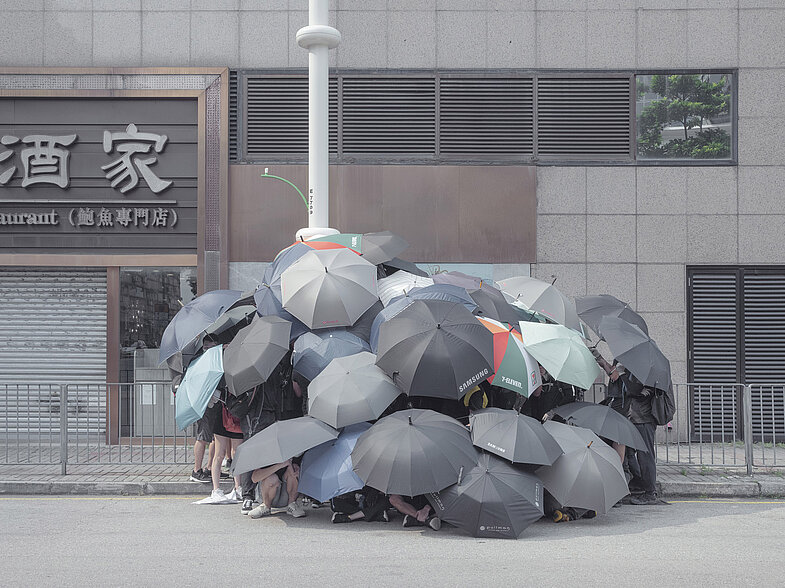
In his series “How was your dream?” Thaddé Comar deals with the question of the extinction of the individual on the occasion of the protests in Hong Kong that flared up again in 2019. This, however, not as a threat, but as a possibly promising opportunity to fight the fight with the controlling powers on an equal footing. The non-traceability of the individual and the absorption of protest in a communal, no longer individual identity that cannot be dissipated, that is his theme. Its protagonists are already wearing the insignia of this new era: lasers, masks of all kinds, Faraday bags and they only communicate in encrypted form.
Constantin Grolig shows raves in the Ruhr area before and during the pandemic in hidden places. Celebration doesn't describe it, rave is the possibility of meditative loss of control, the abandonment of identity and transcendence. The search for a different existence is lived in places that have been forgotten, shifted and temporarily cleared, such as a port area or in places that are about to be redesigned. In this respect, there is an intimate relationship between place and destination in the photographs of these raves - in between. In dim light, Grolig lets his protagonists dance into the morning between hope and oblivion. Details, body parts, material and light make the sound tangible, which drones over the scenes like a roar, but also an eloquent noise between the tracks or during preparation.
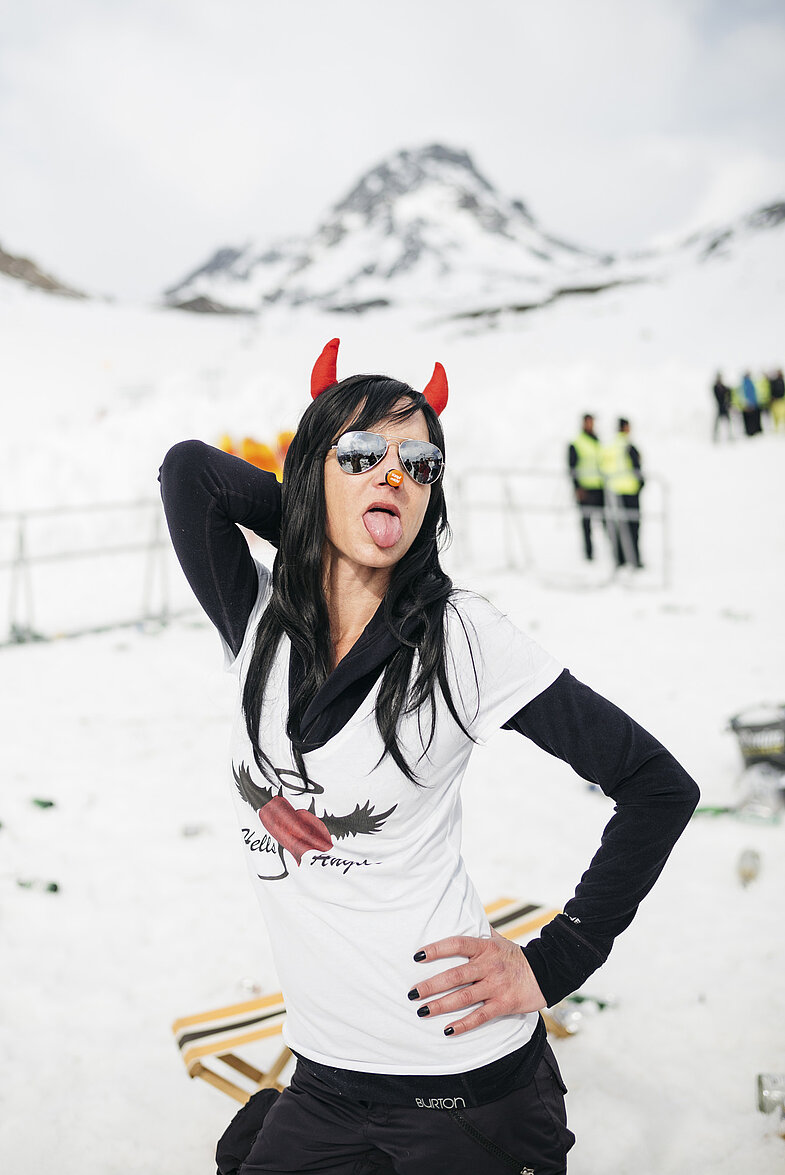
As a Tyrolean, Lois Hechenblaikner is the black sheep, and he is so voluntarily, if not imbued with holy seriousness. His pictures of partying in Ischgl went around the world after the outbreak of the pandemic in Central Europe. Ischgl became the starting point for many cases of infection in the hometowns of those returning from traveling. The tasteless, almost self-destructive lust for celebration is the central subject of Hechenblaikner's work. His pictures resemble pictures of crime scenes, which prove which orgy, which gathering took place here. The pictures from Ischgl are accusations against man's treatment to nature, even maybe a justification for the punishment of the pandemic and also a devastating judgment about his homeland.
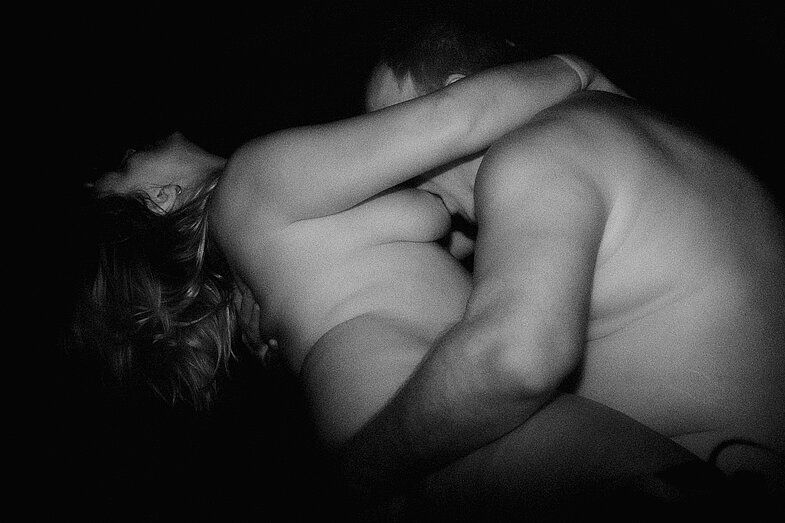
Sabine Springer shows pictures from a club in which couples devotedly celebrate their own love and sexuality together. She works on infrared film, so that the photographer goes unnoticed and the couples can devote themselves to their own actions unrestrained, unadorned and undisguised. In the ZONAR series, the portraits are confronted with photographs of the locations that define the location of the event. Springer is concerned with an image of sexuality and desire, but also communication and understanding. The photographer gives the smallest interrelated team of people, the duo, in all its aspects a very own self-evident dignity.
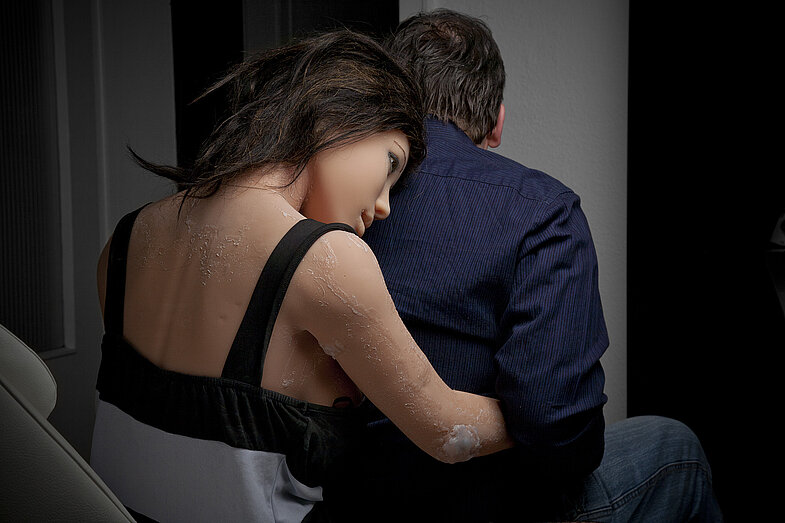
Julia Steinigeweg gives a stage to people and their relation to dolls. The relationship from adults to dolls that are as lifelike as possible is accompanied by the prejudice that it is exclusively sexual relationships that are being replaced here. Steinigeweg shows the intimate relationship also apart from the sexual connotation, which is an often desperate, but sometimes also deeply felt turn. Even if the puppet-being has no sensations and thoughts of its own, this is now covered over by a technically overwhelming physical precision. The viewer's uncertainty stems from the fact that Steinigeweg makes the search for a fear-free and calm relationship between doll and person so palpable.
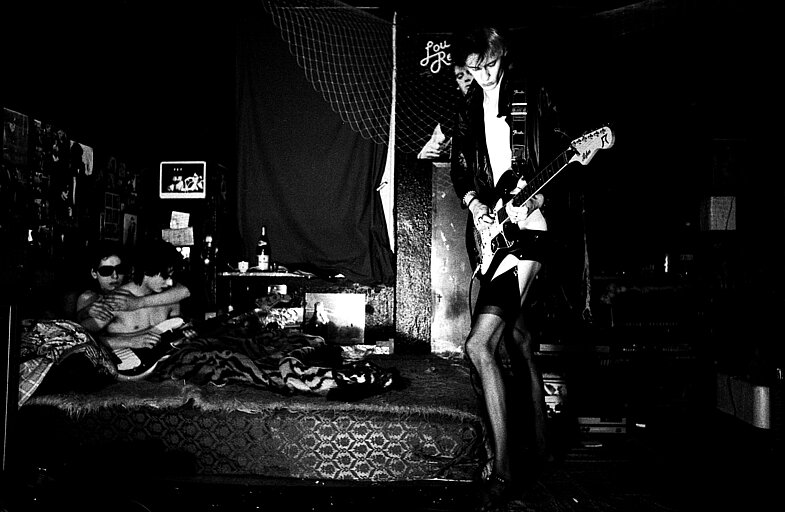
Miron Zownir has been going where it hurts for over 40 years. His imagery remains tough, ruthless and courageous. In his series Berlin Noir, he shows the insides of a city that is celebrated on paper for its culture and nightlife in honest black and white. Together with the photographer we go behind the scenes, directing our gaze to the people who surrender to their lives, have become entangled in their lives, are overwhelmed by life or dance with relish through their lives. Zownir accurately finds moments of maximum emotion and intensity. In the confrontation of the eighties with the decade of the 21st century, the photographer succeeds in looking over the decades at a Berlin that seems suspiciously unchanged. Zownir arouses the suspicion that his pictures captured the timeless essence of the city as well as the actual life of its residents.